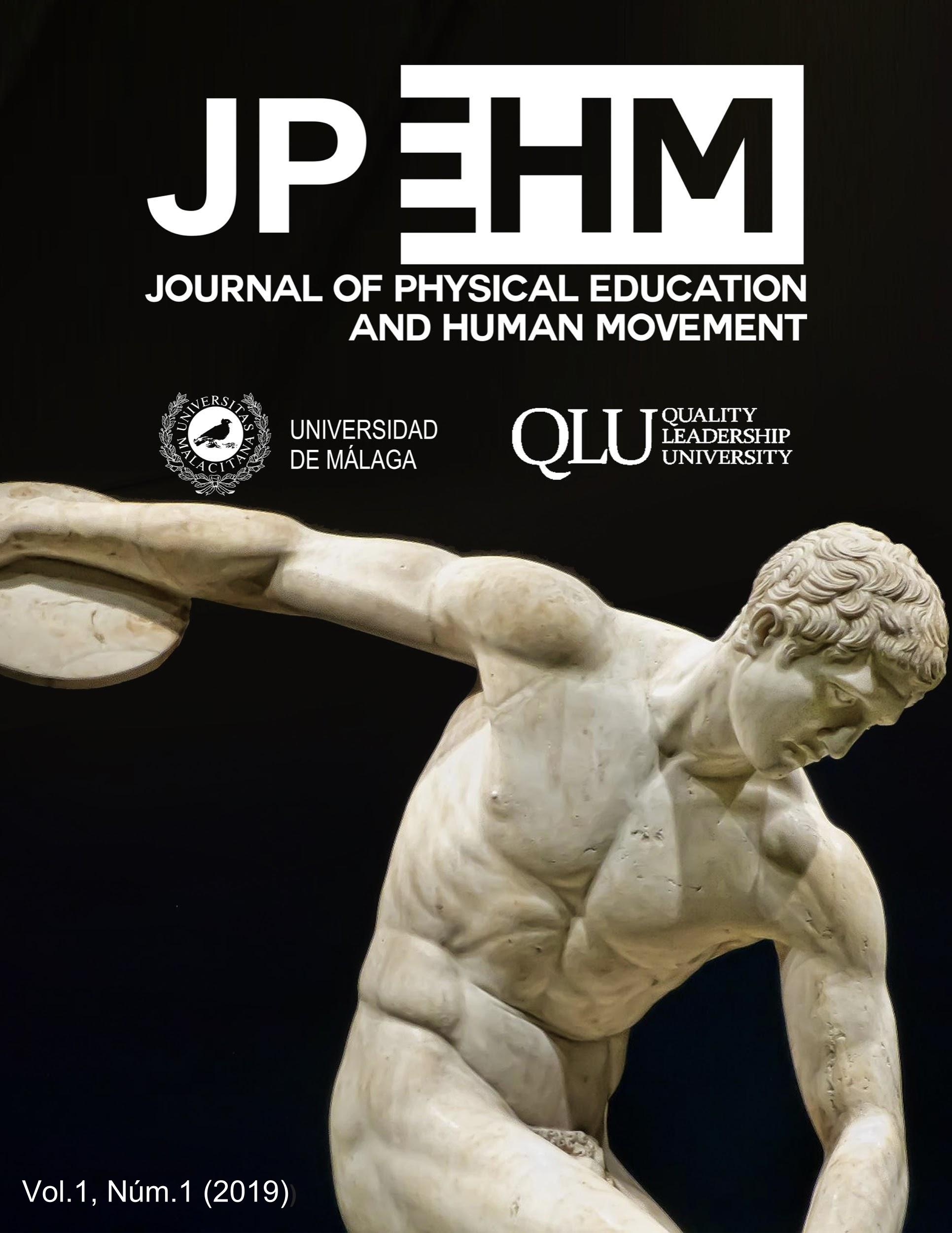IMPROVING POST-EXERCISE ATTENTION IN SCHOOL ATHLETES
DOI:
https://doi.org/10.24310/JPEHMjpehm.v1i1.5563Keywords:
d2 test, training, karatecasAbstract
This paper aims to analyze the evolutionary development of attention and obtain
Normative data of the d2 selective attention test in schoolchildren who practice sports and
that these are similar to results obtained in previous studies. 14 schoolchildren participated (8
girls) aged between 10 and 12 years (11.32 ? .63 years). All the
Participants had minimal competitive experience and were tested on
same day after a medium intensity workout. Test results
show an improvement in the results of attention in the post-test, although these differences are not
are statistically significant, likewise we did not find significant differences in the
level of attention in terms of gender, although the results of the girls are slightly
superior to the boys that could be due to the maturational level of both sexes in this
evolutionary stage.
Downloads
Metrics
References
Albertín-Marco, R. (2012). Estudio preliminar de correlación entre atención plena y componentes atencionales cognitivos en educación primaria. (Trabajo fin de grado, UNIR) recuperado https://reunir.unir.net/bitstream/handle/123456789/231/Albertin_Raquel.pdf?sequence=1&isAllowed=y
Brickenkamp, R. (2004). d2: Test de atención–Manual (adapt. Nicolás Seisdedos Cubero; Revisada y Ampliada). Madrid: TEA Ed.
Castillo, M.D. (2009). La atención. Madrid: Pirámide.
Caldwell, J. A., Caldwell, J. L., Smith, J. K. y Brown, D. L. (2004). Modafinil’s effects on simulator performance and mood in pilots during 37 h without sleep. Aviation Space and Environmental Medicine.
Cuesta, M., de Iscar, M.J., Begega, M.A., Méndez, M., Álvarez, L., Solís, G.,..y Arias, J.L. (2007). Psychometric properties of the d2 selective attention test in a sample of premature and born-at-term babies. Psicothema, 19, 706-710.
De Vega, M., y Vega, M. (1984). La Atención. Introducción a la Psicología Cognitiva, 123-171.
García, J. (2008). Psicología de la atención. Madrid: Síntesis.
González-González, B. (2017). El efecto semanal de actividad física de alta intensidad en la atención, concentración y memoria en adolescentes. (Trabajo Fin de Máster, Universidad de Jaén). Recuperado de http://tauja.ujaen.es/handle/10953.1/4682.
Gunzelmann, G., Moore, L. R., Gluck, K. A., Van Dongen, H. P. A., y Dinges, D. F. (2011). Fatigue in sustained attention: Generalizing mechanisms for time awake to time on task. Cognitive Fatigue: Multidisciplinary Perspectives on Current Research and Future Applications., 83–101. doi: 10.1037/12343-004
Jiménez, J. E., Hernández, S., García, E., Díaz, A., Rodríguez, C., y Martín, R. (2012). Test de atención D2: Datos normativos y desarrollo evolutivo de la atención en educación primaria. European journal of education and psychology, 5(1).
McMorris, T., Davranche, K., Jones, G., Hall, B., Corbett, J., y Minter, C. (2009). Acute incremental exercise, performance of a central executive task, and sympathoadrenal system and hypothalamic-pituitary-adrenal axis activity. International Journal of Psychophysiology, 73(3), 334–340. doi: 10.1016/j.ijpsycho.2009.05.004
Miranda, A., García, R. y Soriano, M. (2005). Habilidad narrativa de los niños con trastorno por déficit de atención con hiperactividad. Psicothema, 17, 227-232.
Parasuranam, R. (1984). Sustained attention in detection and discrimination. En R. Parasuranam y D.R. Davies (Eds.), Varieties of Attention (pp. 243-271). Nueva York: Academic Press.
Pérez-Lobato, R., Reigal, R., y Hernández Mendo, A. (2016). Relaciones entre la práctica física, condición física y atención en una muestra adolescente. Revista de psicología del deporte, 25(1), 0179-186.
Rebollo, M.A. y Montiel, S. (2006). Atención y funciones ejecutivas. Revista de Neurología, 42, 3-7.
Tomporowski, P. D. (2009). Methodological Issues: Research Approaches, Research Design, and Task Selection. In Exercise and Cognitive Function. doi: 10.1002/9780470740668.ch4
Vega, M. (1984). Introducción a la psicología cognitiva. Madrid: Alianza Editorial.
Zillmer, E.A. y Spiers, M.V. (1998). Principles of clinical neuropsychology. Pacific Groove, CA: Brooks/Cole.
Downloads
Published
How to Cite
Issue
Section
License
Aquellos autores/as que tengan publicaciones con esta revista, aceptan los términos siguientes:
- Los autores/as conservarán sus derechos de autor y garantizarán a la revista el derecho de primera publicación de su obra, el cuál estará simultáneamente sujeto a la Licencia de reconocimiento de Creative Commons que permite a terceros compartir la obra siempre que se indique su autor y su primera publicación esta revista.
- Los autores/as podrán adoptar otros acuerdos de licencia no exclusiva de distribución de la versión de la obra publicada (p. ej.: depositarla en un archivo telemático institucional o publicarla en un volumen monográfico) siempre que se indique la publicación inicial en esta revista.
- Se permite y recomienda a los autores/as difundir su obra a través de Internet (p. ej.: en archivos telemáticos institucionales o en su página web) antes y durante el proceso de envío, lo cual puede producir intercambios interesantes y aumentar las citas de la obra publicada. (Véase El efecto del acceso abierto).







15.png)
